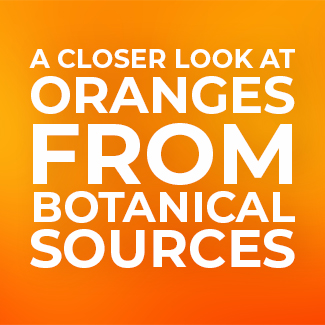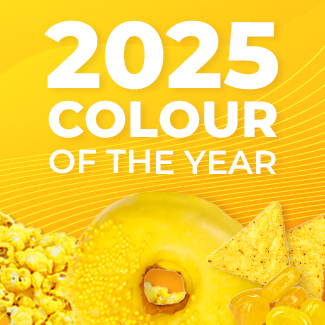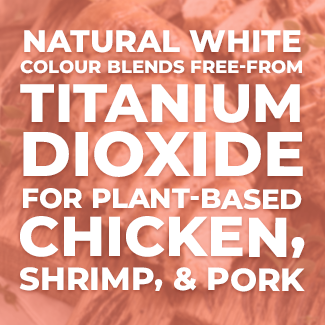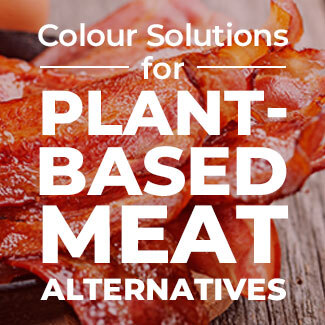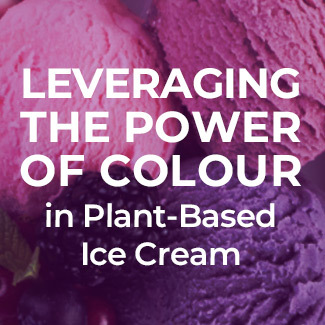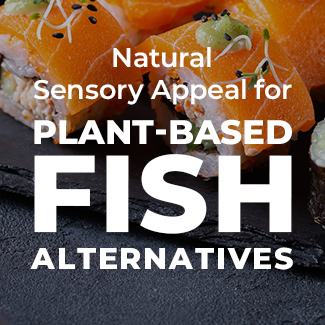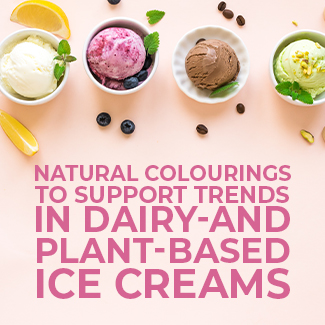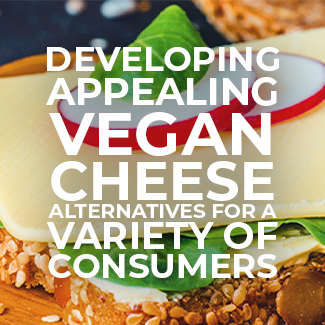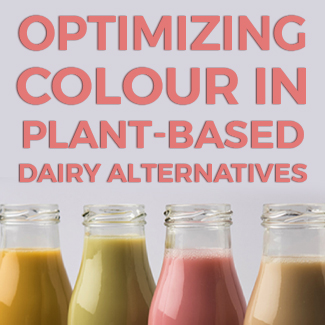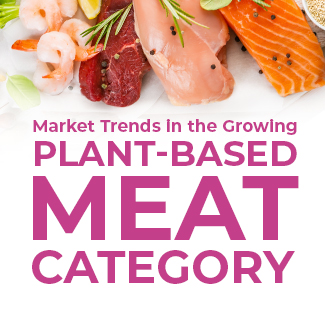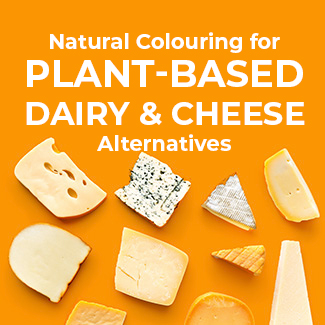Differentiation with Naturally Bright Shades in Plant-Based Alternatives
Promising Future for Plant-Based Alternatives
Alternative dairy products have been around for a long time. The first soya dairy factory was set up near Paris in 1910, and it was only later in the 70s and 80s that the demand for soya drinks took off across Europe (Vegan Food & Living). The vegan dairy segment has been growing steadily ever since, even more strongly throughout recent years.
In Europe, the number of plant-based dairy launches has doubled since 2015, with nearly every 10th “Dairy” product having a vegan claim in 2020.
(Mintel)
As the number of launches grows, diversifying with new base materials drives plant-based innovation. Brands across the globe are formulating with more recent ingredients like chickpeas, barley, or hempseed. This can help not only to differentiate products, appeal to experimental consumers but to create a different nutritional profile as well. Along with the variety of bases, the number of dairy categories with vegan alternatives expands too. New, exciting plant-based alternatives in yogurt, cheese, and ice cream are on the rise. According to Grand View Research’s forecast, the plant-based beverage and dairy market is predicted to experience a CAGR of 10-17% between 2020 and 2025 in Europe.
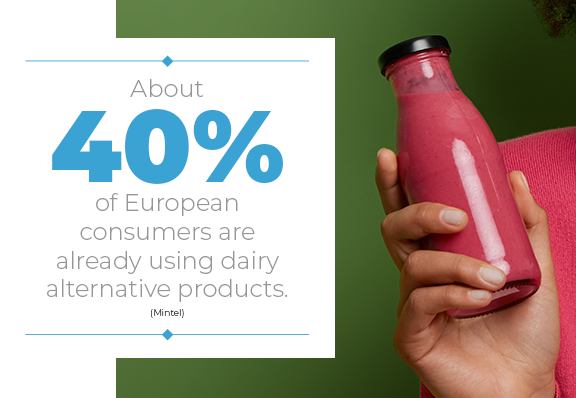
Dairy alternatives enjoy growing popularity among consumers. These products appeal not only to people on a plant-based diet but enjoy growing popularity among consumers eating animal-derived products but trying to incorporate more plants into their diet.
As demand rises, new exciting concepts give a great opportunity for brands to stand out. New flavours can appeal to both existing buyers looking for something different and consumers who are about to try a plant-based alternative for the first time. Concurrently, consumers’ desire for “clean” food and beverages further evolves. Consumers are looking for simple and recognizable ingredients. As vegan dairy alternatives can be perceived as too processed with too many artificial ingredients, more natural products have a great chance to win consumers over.
The Relevancy of Colouring
As dairy alternatives aim to mimic well-known, traditional products, matching both the original flavour and look is crucial for consumer acceptance. Colour plays a significant role in dairy alternatives. For example, cheese analogues without any added colour often have a muted, light shade. However, an eye-catching cheddar-like analogue would require a bright orange colour to meet the visual expectations of consumers.
Meeting the visual expectation is one thing, but Sensient consumer research has validated further why colour is important:
- Colour is an important driver of product appeal and product associations
- Colour intensity can raise consumer impression of a more appetizing and higher quality product
- Colour intensity can raise consumer impression of a more tasty and flavourful product
As mentioned in our previous article on dairy alternatives, there are some key technical details to consider when using natural colourings for plant-based alternatives:
Starting base/recipe shade due to dairy-free material
Packaging & oxygen permeation
heat
processing/
treatment
acidity & pH
Taking the example of the base shade, the difference between uncoloured and coloured drinks made of different raw materials is noticeable. To demonstrate the impact of the base shade on the final colour, we used the same dosage of natural colourings for each drink.
Uncoloured
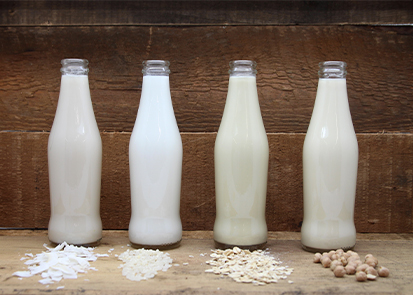
Coloured
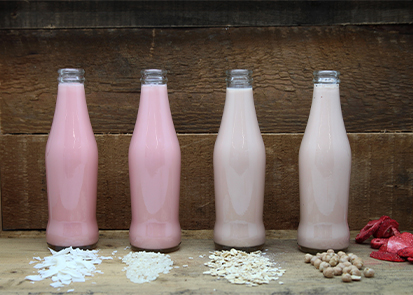
However, the shade of the base is not a limitation. Bright and intense colours can be achieved regardless, no need to compromise on the colour. To prove this, let’s take a look at a few naturally vibrant examples from different plant-based categories…
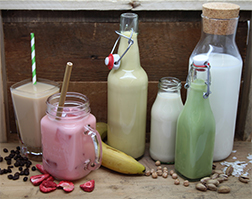
Plant-Based Drinks
Despite plain plant-based drinks being the most widespread for a long time, in 2020 close to every 4th product launch was flavoured in Europe (Mintel). Both simple and less traditional, “adult” flavour concepts are trending nowadays. Mango & Passionfruit, Turmeric Latte, Salted Caramel– to name just a few of the most recent launches. Whether it is a fresh or UHT product, vibrant natural colourings can help to support the flavour profile visually and to make products stand out on the shelf.
Plant-Based Yogurt Alternatives
As naturalness is becoming increasingly important for consumers, they consider organic products as a shortcut to avoid artificial additives and preservatives. In 2020, close to a third of vegan yogurt launches were organic (Mintel). While plain products are common, the majority are flavoured. Fruity flavours, like berries, seem to be the most typical, but vanilla, nut, or citrus flavours are on the rise. Organic solutions can help create a visually appealing natural look that raises consumer impression of a more tasty and flavourful product. Originating from traditional foods such as carrot or beet, organic solutions provide a variety of vibrant shades with excellent stability and colouring efficiency.
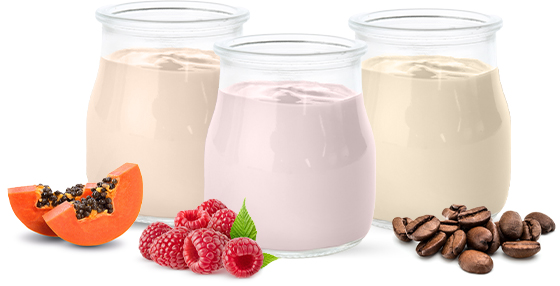
Plant-Based Cheese Alternatives
Compared to other plant-based foods such as snacks or desserts, cheese has the largest market in Europe, and since 2016 the number of launches has doubled (Mintel). As consumers reported a desire to reduce their cheese consumption for environmental and health reasons (Mintel), vegan alternatives have the opportunity to offer a “healthier” and more sustainable option. The number of opportunities is almost endless: from cheddar-like blocks and sliced cheeses through grated parmesan and feta alternatives to creamy flavoured spreads and vegan mozzarella. If you wish to appeal to environmentally conscious consumers, the palm-free range of colouring foods is here to make your products stand out without using any palm derivatives.
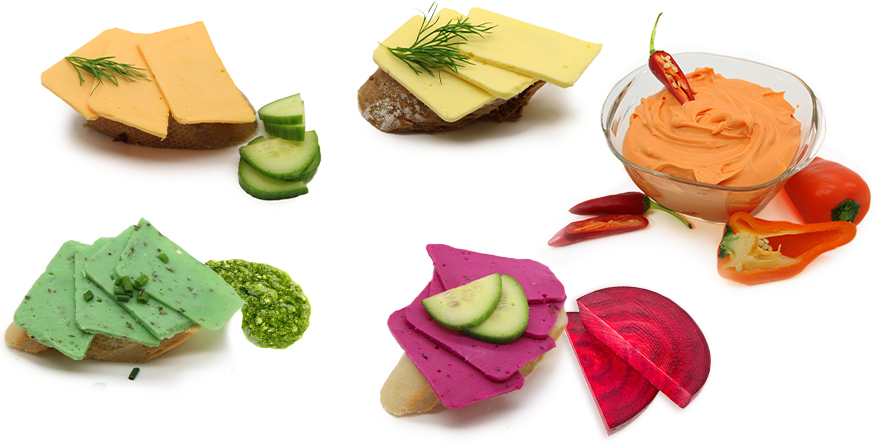
Plant-Based Ice Cream
Nearly 40% of French consumers said that ice creams with more indulgent recipes (e.g. extra chocolate) would prompt them to eat them more often (Mintel). At the same time, 54% of Italian consumers report that they would buy more ice cream if it had all-natural ingredients. At first glance, these consumer desires might sound somewhat controversial. However, vegan ice creams and desserts with novel flavours (e.g. inspired by bakery items or alcoholic drinks), made of natural ingredients can leverage these interests.
The Cardea range of colouring foods enables you to achieve a bright colour in both dairy- and water-based ice creams naturally. Due to the unique composition of recognizable natural ingredients, the entire formulation is free of additives and preservatives. The perfect solution for an all-natural positioning.

If you would like to achieve a creamier appearance or make your coloured products stand out with a brighter shade by lightening your base, the Avalanche range is here to help.

Sensient is here to help you achieve the desired shade in your plant-based application. If you have any questions about a specific project, please don’t hesitate to reach out to me or my team! If you’re already ready to go, feel free to request a sample to begin benchwork.




